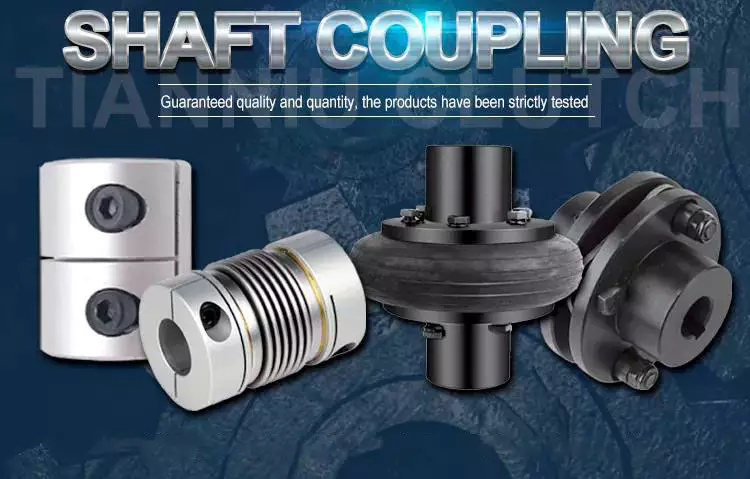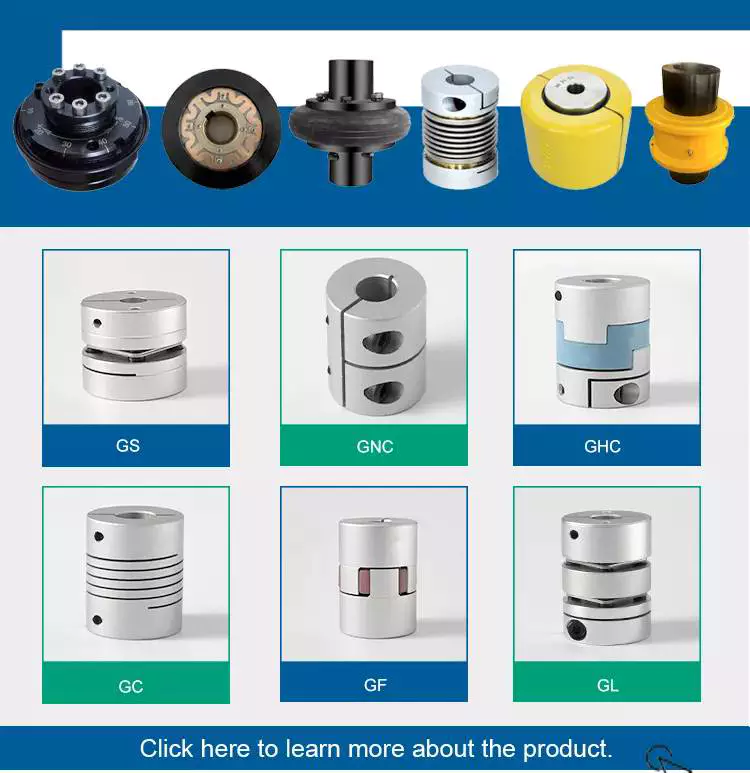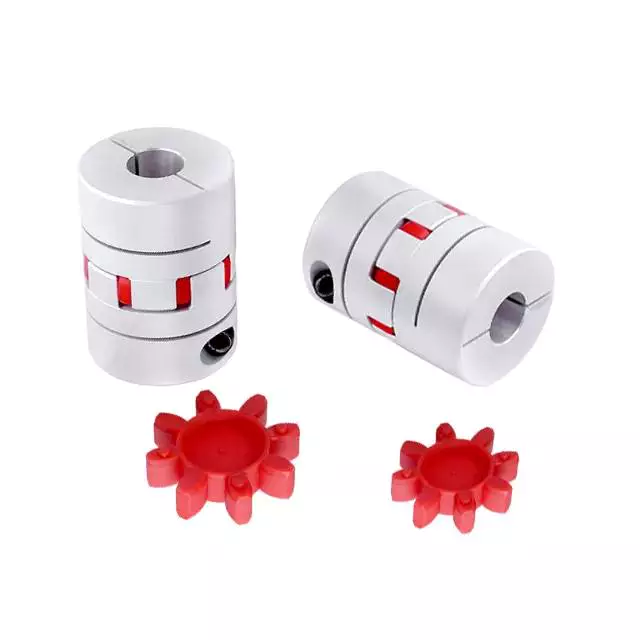Product Description
Welcome to Visit our wuyi CHINAMFG chain factory in CHINA.
all kinds of chain couplings, including as belows:
4012-4014-4016 ,,6018,6571,8018,8571,1571,12571 and so on.
| Item | Sprocket / plate wheel/gear | |
| Standard | DIN, KANA, ANSI, ISO, etc | |
| Material | C45, stainless steel SS304 & SS316, Cast iron | |
| Bore | Pilot bore, finished bore, taper bore | |
| Surface Treatment | Black oxided, Zinc plated, Electrophoresis, self color and so on | |
| Heat treatment | Teeth inductive and quenching hardened HRC45-50,High frequency quenching or no hardened | |
| Process | Forging, Cutting, Hobbing teeth, CNC Lathe machining | |
|
|
||
| European Type | 03B, 04B, 05B, 06B, 081B, 083B/084B, 085B, 086B, 08B, 10B, 12B, 16B, 20B, 24B, 28B, 32B,40B,48B with simplex, duplex and triplex | |
| American Type | 25, 35, 40, 50, 60, 80, 100, 120, 140, 160, 200, 240 with simplex or duplex and triplex | |
|
Double pitch sprockets Type |
C2042, C2052, C2062, C2082, C2040, C2050, C2060, C2080 | |
| sprocket Type | Taper bore sprockets,Finished bore sprockets,Idler sprockets with ball bearing,Double simplex sprockets,Sprockets with split taper bushings,Sprockets with QD bushings,Double sprockets for 2 single chains,Type A & Type B, Single, Double, Triple -all kind sof standardf sprocket or wheel plate,and also can match with special conveyor chain, agricultural chain. or can make , according to customer reuqiryment | |
| Business type | Manufacturer/FACTORY | |
| Main export market | Europe, South America, Southeast Asia, Middle East, Africa | |
| Manufacturing method | Forged and then machined and hobbed | |
Bitmap
|
Plywood Case/Pallet/cartons or according to customer reuqiryment |
| we are CHINAMFG chain factory from CHINA. |
| We make roller chains over 20 years. main ASA chains: — main DIN chains:06b-08b-10b-12b-16b-20b-24b-32b main motorcycle chains: H 520 520H 530 Our quality: middle level and good and stable. Follow up XIHU (WEST LAKE) DIS.HUA standard We also exported many industrial sprockets together with our chains. We mainly exported chains to South America AND Europe. |
/* January 22, 2571 19:08:37 */!function(){function s(e,r){var a,o={};try{e&&e.split(“,”).forEach(function(e,t){e&&(a=e.match(/(.*?):(.*)$/))&&1
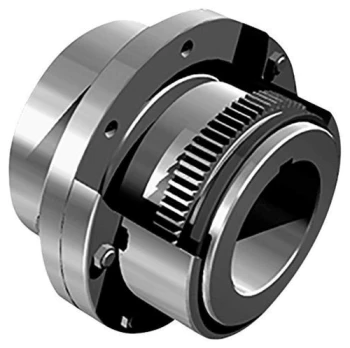
Can Gear Couplings Accommodate High Torque and High-Speed Applications?
Yes, gear couplings are well-suited for high torque and high-speed applications in various industries. They are designed to transmit large amounts of torque efficiently while providing torsional rigidity and compensating for misalignment between shafts. The robust construction and unique toothed gear design of gear couplings allow them to handle heavy-duty and demanding operating conditions.
The key factors that enable gear couplings to accommodate high torque and high-speed applications are:
- Sturdy Construction: Gear couplings are typically made from high-quality materials such as steel or alloy, ensuring strength, durability, and the ability to withstand substantial torque loads without failure.
- High Torque Capacity: The toothed gear design of gear couplings allows for a large surface area of contact between the teeth, distributing torque evenly and effectively. This design significantly enhances the coupling’s torque-carrying capacity.
- Torsional Rigidity: Gear couplings offer excellent torsional rigidity, meaning they can resist angular deflection and maintain accurate torque transmission even under heavy loads and at high speeds.
- High-Speed Balancing: Gear couplings are precisely balanced during manufacturing to minimize vibration and prevent harmful effects on connected equipment, even when operating at high speeds.
- Misalignment Compensation: Gear couplings can accommodate both angular and parallel misalignment between shafts, which is common in high-speed applications where thermal expansion and dynamic forces come into play.
- Lubrication: Proper lubrication is crucial for reducing friction and wear in gear couplings, especially in high-speed applications where heat generation is higher. Lubrication also helps dissipate heat and ensures smooth operation.
Due to their ability to handle high torque and high speeds, gear couplings are commonly used in various industries, including steel, mining, power generation, paper mills, and more. However, it is essential to select the right size and type of gear coupling based on the specific application requirements and operating conditions to ensure optimal performance and reliability.


editor by CX 2024-05-06
China wholesaler High Quality Machinery China Factory Transmission Drive Roller Chain Coupling Gear gear coupling
Product Description
Welcome to Visit our wuyi CHINAMFG chain factory in CHINA.
all kinds of chain couplings, including as belows:
4012-4014-4016 ,,6018,6571,8018,8571,1571,12571 and so on.
| Item | Sprocket / plate wheel/gear | |
| Standard | DIN, KANA, ANSI, ISO, etc | |
| Material | C45, stainless steel SS304 & SS316, Cast iron | |
| Bore | Pilot bore, finished bore, taper bore | |
| Surface Treatment | Black oxided, Zinc plated, Electrophoresis, self color and so on | |
| Heat treatment | Teeth inductive and quenching hardened HRC45-50,High frequency quenching or no hardened | |
| Process | Forging, Cutting, Hobbing teeth, CNC Lathe machining | |
|
|
||
| European Type | 03B, 04B, 05B, 06B, 081B, 083B/084B, 085B, 086B, 08B, 10B, 12B, 16B, 20B, 24B, 28B, 32B,40B,48B with simplex, duplex and triplex | |
| American Type | 25, 35, 40, 50, 60, 80, 100, 120, 140, 160, 200, 240 with simplex or duplex and triplex | |
|
Double pitch sprockets Type |
C2042, C2052, C2062, C2082, C2040, C2050, C2060, C2080 | |
| sprocket Type | Taper bore sprockets,Finished bore sprockets,Idler sprockets with ball bearing,Double simplex sprockets,Sprockets with split taper bushings,Sprockets with QD bushings,Double sprockets for 2 single chains,Type A & Type B, Single, Double, Triple -all kind sof standardf sprocket or wheel plate,and also can match with special conveyor chain, agricultural chain. or can make , according to customer reuqiryment | |
| Business type | Manufacturer/FACTORY | |
| Main export market | Europe, South America, Southeast Asia, Middle East, Africa | |
| Manufacturing method | Forged and then machined and hobbed | |
Bitmap
|
Plywood Case/Pallet/cartons or according to customer reuqiryment |
| we are CHINAMFG chain factory from CHINA. |
| We make roller chains over 20 years. main ASA chains: — main DIN chains:06b-08b-10b-12b-16b-20b-24b-32b main motorcycle chains: H 520 520H 530 Our quality: middle level and good and stable. Follow up XIHU (WEST LAKE) DIS.HUA standard We also exported many industrial sprockets together with our chains. We mainly exported chains to South America AND Europe. |
/* January 22, 2571 19:08:37 */!function(){function s(e,r){var a,o={};try{e&&e.split(“,”).forEach(function(e,t){e&&(a=e.match(/(.*?):(.*)$/))&&1
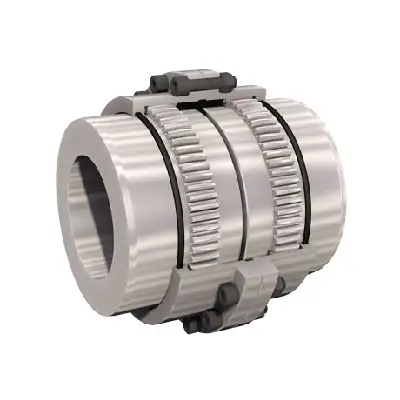
Types of Gear Coupling Designs
There are several types of gear coupling designs available, each with its own specific characteristics and applications. The main types of gear couplings are:
- Sleeve Gear Couplings: Sleeve gear couplings consist of two hubs with external gears and a center sleeve with internal gears. The hubs are mounted on the shaft ends, and the center sleeve connects the two hubs. This design allows for angular and axial misalignment while transmitting torque between the shafts. Sleeve gear couplings are suitable for general-purpose applications and offer easy maintenance.
- Continuous Sleeve Gear Couplings: Continuous sleeve gear couplings are an improved version of sleeve gear couplings. In this design, the center sleeve is extended to cover the entire length of the hubs, providing additional support and increasing torque capacity. The continuous sleeve design reduces the bending effect on the shafts and allows for higher torque transmission.
- Flanged Sleeve Gear Couplings: Flanged sleeve gear couplings are similar to continuous sleeve couplings but include flanges at the ends of the center sleeve. These flanges provide extra support and help maintain proper alignment between the shafts. Flanged sleeve gear couplings are commonly used in high-speed and heavy-duty applications.
- Half Gear Couplings: Half gear couplings, also known as semi-rigid gear couplings, consist of one flexible half and one rigid half. The flexible half has internal gear teeth, while the rigid half has external gear teeth. This design allows for angular misalignment while offering higher torque capacity than fully flexible couplings. Half gear couplings are often used in applications where some degree of misalignment is expected, but not as much as what sleeve gear couplings can handle.
- Full Gear Couplings: Full gear couplings consist of two hubs with external gear teeth that mesh directly with each other. This design provides high torque capacity and is suitable for applications requiring minimal misalignment. Full gear couplings offer excellent torsional rigidity and are often used in precision applications where accurate shaft alignment is critical.
- Flexible Gear Couplings: Flexible gear couplings combine the features of gear couplings and flexible couplings. They consist of two hubs with external gears and a flexible element, such as a membrane or elastomeric material, connecting the hubs. This design allows for some misalignment while providing damping of vibrations and shock absorption.
Each type of gear coupling has its advantages and limitations, and the choice of coupling design depends on the specific requirements of the application, including the level of misalignment, torque capacity, speed, and environmental conditions.


editor by CX 2024-04-04
China Hot selling High Quality Machinery China Factory Transmission Drive Roller Chain Coupling Gear gear coupling
Product Description
Welcome to Visit our wuyi CHINAMFG chain factory in CHINA.
all kinds of chain couplings, including as belows:
4012-4014-4016 ,,6018,6571,8018,8571,1571,12571 and so on.
| Item | Sprocket / plate wheel/gear | |
| Standard | DIN, KANA, ANSI, ISO, etc | |
| Material | C45, stainless steel SS304 & SS316, Cast iron | |
| Bore | Pilot bore, finished bore, taper bore | |
| Surface Treatment | Black oxided, Zinc plated, Electrophoresis, self color and so on | |
| Heat treatment | Teeth inductive and quenching hardened HRC45-50,High frequency quenching or no hardened | |
| Process | Forging, Cutting, Hobbing teeth, CNC Lathe machining | |
|
|
||
| European Type | 03B, 04B, 05B, 06B, 081B, 083B/084B, 085B, 086B, 08B, 10B, 12B, 16B, 20B, 24B, 28B, 32B,40B,48B with simplex, duplex and triplex | |
| American Type | 25, 35, 40, 50, 60, 80, 100, 120, 140, 160, 200, 240 with simplex or duplex and triplex | |
|
Double pitch sprockets Type |
C2042, C2052, C2062, C2082, C2040, C2050, C2060, C2080 | |
| sprocket Type | Taper bore sprockets,Finished bore sprockets,Idler sprockets with ball bearing,Double simplex sprockets,Sprockets with split taper bushings,Sprockets with QD bushings,Double sprockets for 2 single chains,Type A & Type B, Single, Double, Triple -all kind sof standardf sprocket or wheel plate,and also can match with special conveyor chain, agricultural chain. or can make , according to customer reuqiryment | |
| Business type | Manufacturer/FACTORY | |
| Main export market | Europe, South America, Southeast Asia, Middle East, Africa | |
| Manufacturing method | Forged and then machined and hobbed | |
Bitmap
|
Plywood Case/Pallet/cartons or according to customer reuqiryment |
| we are CHINAMFG chain factory from CHINA. |
| We make roller chains over 20 years. main ASA chains: — main DIN chains:06b-08b-10b-12b-16b-20b-24b-32b main motorcycle chains: H 520 520H 530 Our quality: middle level and good and stable. Follow up XIHU (WEST LAKE) DIS.HUA standard We also exported many industrial sprockets together with our chains. We mainly exported chains to South America AND Europe. |
/* January 22, 2571 19:08:37 */!function(){function s(e,r){var a,o={};try{e&&e.split(“,”).forEach(function(e,t){e&&(a=e.match(/(.*?):(.*)$/))&&1
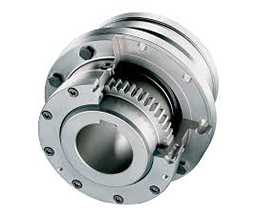
Maintenance Requirements for Gear Couplings
Gear couplings, like any mechanical component, require regular maintenance to ensure optimal performance, reliability, and longevity. Proper maintenance can help prevent unexpected failures and downtime, leading to cost savings and increased productivity. Here are the key maintenance requirements for gear couplings:
- Lubrication: Regular and proper lubrication is essential for gear couplings. The coupling’s gear teeth and mating surfaces should be adequately lubricated to minimize friction and wear. The lubrication interval and type of lubricant used depend on the application, load, and operating conditions. It is crucial to follow the manufacturer’s recommendations for lubrication intervals and the appropriate lubricant to use.
- Inspections: Routine inspections should be performed to check for signs of wear, misalignment, or damage. Visual inspections can help detect any abnormalities, such as pitting, scoring, or corrosion on the gear teeth. Additionally, inspections can identify any misalignment issues that may need to be addressed to prevent further damage.
- Torque Monitoring: Monitoring the torque transmitted through the coupling can help identify any abnormal increases that might indicate a problem in the system. Sudden changes in torque levels could signal misalignment or other issues that need attention.
- Alignment Checks: Regularly checking and correcting shaft alignment is crucial for the proper functioning of gear couplings. Misalignment can lead to increased wear and premature failure of the coupling. Proper alignment reduces the stress on the coupling and connected equipment.
- Temperature Monitoring: Monitoring the operating temperature of the coupling can provide insights into potential problems. Abnormally high temperatures could indicate insufficient lubrication or other issues that need investigation.
- Coupling Removal and Cleaning: Periodically removing the coupling for cleaning and inspection of internal components can be beneficial, especially in harsh or dirty environments. This allows for a more thorough inspection and helps maintain the coupling’s performance.
- Replacement of Worn Components: If any components of the gear coupling, such as seals or gaskets, are worn or damaged, they should be replaced promptly to maintain the coupling’s integrity and prevent leaks.
- Proper Storage: If the coupling is temporarily removed from service or stored, it should be stored in a clean and dry environment to prevent corrosion and damage to the components.
It is essential to follow the manufacturer’s maintenance guidelines and recommendations for the specific gear coupling model being used. Regular maintenance and adherence to proper procedures can help extend the service life of gear couplings and ensure reliable and efficient operation in the mechanical system.


editor by CX 2024-04-04
China manufacturer High Quality Machinery China Factory Transmission Drive Roller Chain Coupling Gear gear coupling
Product Description
Welcome to Visit our wuyi CHINAMFG chain factory in CHINA.
all kinds of chain couplings, including as belows:
4012-4014-4016 ,,6018,6571,8018,8571,1571,12571 and so on.
| Item | Sprocket / plate wheel/gear | |
| Standard | DIN, KANA, ANSI, ISO, etc | |
| Material | C45, stainless steel SS304 & SS316, Cast iron | |
| Bore | Pilot bore, finished bore, taper bore | |
| Surface Treatment | Black oxided, Zinc plated, Electrophoresis, self color and so on | |
| Heat treatment | Teeth inductive and quenching hardened HRC45-50,High frequency quenching or no hardened | |
| Process | Forging, Cutting, Hobbing teeth, CNC Lathe machining | |
|
|
||
| European Type | 03B, 04B, 05B, 06B, 081B, 083B/084B, 085B, 086B, 08B, 10B, 12B, 16B, 20B, 24B, 28B, 32B,40B,48B with simplex, duplex and triplex | |
| American Type | 25, 35, 40, 50, 60, 80, 100, 120, 140, 160, 200, 240 with simplex or duplex and triplex | |
|
Double pitch sprockets Type |
C2042, C2052, C2062, C2082, C2040, C2050, C2060, C2080 | |
| sprocket Type | Taper bore sprockets,Finished bore sprockets,Idler sprockets with ball bearing,Double simplex sprockets,Sprockets with split taper bushings,Sprockets with QD bushings,Double sprockets for 2 single chains,Type A & Type B, Single, Double, Triple -all kind sof standardf sprocket or wheel plate,and also can match with special conveyor chain, agricultural chain. or can make , according to customer reuqiryment | |
| Business type | Manufacturer/FACTORY | |
| Main export market | Europe, South America, Southeast Asia, Middle East, Africa | |
| Manufacturing method | Forged and then machined and hobbed | |
Bitmap
|
Plywood Case/Pallet/cartons or according to customer reuqiryment |
| we are CHINAMFG chain factory from CHINA. |
| We make roller chains over 20 years. main ASA chains: — main DIN chains:06b-08b-10b-12b-16b-20b-24b-32b main motorcycle chains: H 520 520H 530 Our quality: middle level and good and stable. Follow up XIHU (WEST LAKE) DIS.HUA standard We also exported many industrial sprockets together with our chains. We mainly exported chains to South America AND Europe. |
/* January 22, 2571 19:08:37 */!function(){function s(e,r){var a,o={};try{e&&e.split(“,”).forEach(function(e,t){e&&(a=e.match(/(.*?):(.*)$/))&&1

What Is a Gear Coupling and How Does It Work?
A gear coupling is a type of mechanical coupling that connects two shafts together to transmit torque and rotational motion between them. It consists of two gear-like hubs with external teeth that mesh together and transmit torque via the engagement of the teeth. The gear teeth on the hubs allow for high torque transmission and provide flexibility to accommodate misalignments between the shafts.
The working principle of a gear coupling can be summarized as follows:
1. Gear Hubs: A gear coupling consists of two hubs, each attached to the respective shafts that need to be connected. The hubs have external gear teeth that mesh together when the coupling is assembled.
2. Gear Teeth Engagement: When the two gear hubs are brought together during installation, the gear teeth on one hub mesh with the corresponding teeth on the other hub. This meshing creates a strong mechanical connection between the two shafts.
3. Torque Transmission: As the connected shafts rotate, the gear teeth engage and transmit torque from one shaft to the other. The gear coupling can handle high torque loads, making it suitable for heavy-duty applications.
4. Misalignment Compensation: One of the key advantages of a gear coupling is its ability to accommodate various types of misalignment, including angular, parallel, and axial misalignments between the connected shafts. This misalignment compensation helps reduce stress on the connected equipment and prevents premature wear.
5. Lubrication: Gear couplings may require lubrication to reduce friction between the gear teeth and ensure smooth operation. Proper lubrication helps improve the efficiency and longevity of the coupling.
Gear couplings are commonly used in various industrial applications, such as power generation, steel mills, mining, and heavy machinery. They offer high torque capacity, excellent misalignment accommodation, and reliability, making them a preferred choice for transmitting power in demanding environments.


editor by CX 2024-03-08
China manufacturer Kc10020 Industrial Transmission Gear Reducer Conveyor Parts Chain Couplings gear coupling
Product Description
|
Chain |
Chain No. |
D Bore Dia | Dimension | Inertia
×10-3 kgf·m2 |
Approx Weight
kg |
Casing | |||||||||||||||||||||||||||||||||||||||||||||||||||||||||||||||||||||||||||||||||||||||||||||||||||||||||||||||||||||||||||||||||||||||||||||||||||||||||||||||||||||||||||||||||||||||||
| Min mm | Max mm | L
mm |
I
mm |
S
mm |
d1 mm |
d2 mm |
C
mm |
Dimension | Approx Weight
kg |
||||||||||||||||||||||||||||||||||||||||||||||||||||||||||||||||||||||||||||||||||||||||||||||||||||||||||||||||||||||||||||||||||||||||||||||||||||||||||||||||||||||||||||||||||||||
| A mm |
B mm |
||||||||||||||||||||||||||||||||||||||||||||||||||||||||||||||||||||||||||||||||||||||||||||||||||||||||||||||||||||||||||||||||||||||||||||||||||||||||||||||||||||||||||||||||||||||||||||||
| KC-1571 | 1-0-0. p. 211. Retrieved 17 May 2-0-0. p. 86. Retrieved 30 January 2015. Green 1996, pp. 2337-2361 “ANSI G7 Standard Roller Chain – Tsubaki Europe”. Tsubaki Europe. Tsubakimoto Europe B.V. Retrieved 18 June 2. External links Wikimedia Commons has media related to Roller chains. The Complete Xihu (West Lake) Dis. to Chain Categories: Chain drivesMechanical power transmissionMechanical power control Why Choose Us
Materials Used in Manufacturing Gear CouplingsGear couplings are designed to transmit torque between shafts while accommodating misalignment. To ensure the durability and reliability of gear couplings, manufacturers use a variety of materials, each with its specific properties. Commonly used materials in manufacturing gear couplings include:
The choice of material depends on the application’s demands, including the torque, speed, environmental conditions, and budget considerations. Gear coupling manufacturers carefully select materials that will provide optimal performance and longevity while meeting the specific requirements of the intended application.
China best Kc5018 Industrial Transmission Gear Reducer Conveyor Parts Chain Couplings gear couplingProduct Description
Chain couplingsThe Chain coupling is composed of a duplex roller chain and a pair of coupling sprockets. The function of connection and detachment is done by the joint of chain. It has the characteristic of compact and powerful, excellent durability, safe and smart, simple installation and easy alignment. The Xihu (West Lake) Dis.hua Chain coupling is suitable for a wide range of coupling applications. Roller chain( Coupling Chains) Though Hans Renold is credited with inventing the roller chain in 1880, sketches by Leonardo da Vinci in the 16th century show a chain with a roller bearing.Coupling chains)Coupling chainsRoller chain or bush roller chain is the type of chain drive most commonly used for transmission of mechanical power on many kinds of domestic, industrial and agricultural machinery, including conveyors, wire- and tube-drawing machines, printing presses, cars, motorcycles, and bicycles. It consists of a series of short cylindrical rollers held together by side links. It is driven by a toothed wheel called a sprocket. It is a simple, reliable, and efficient[1] means of power transmission.
| ||||||||||||||||||||||||||||||||||||||||||||||||||||||||||||||||||||||||||||||||||||||||||||||||||||||||||||||||||||||||||||||||||||||||||||||||||||||||||||||||||||||||||||||||||||||||||||||

